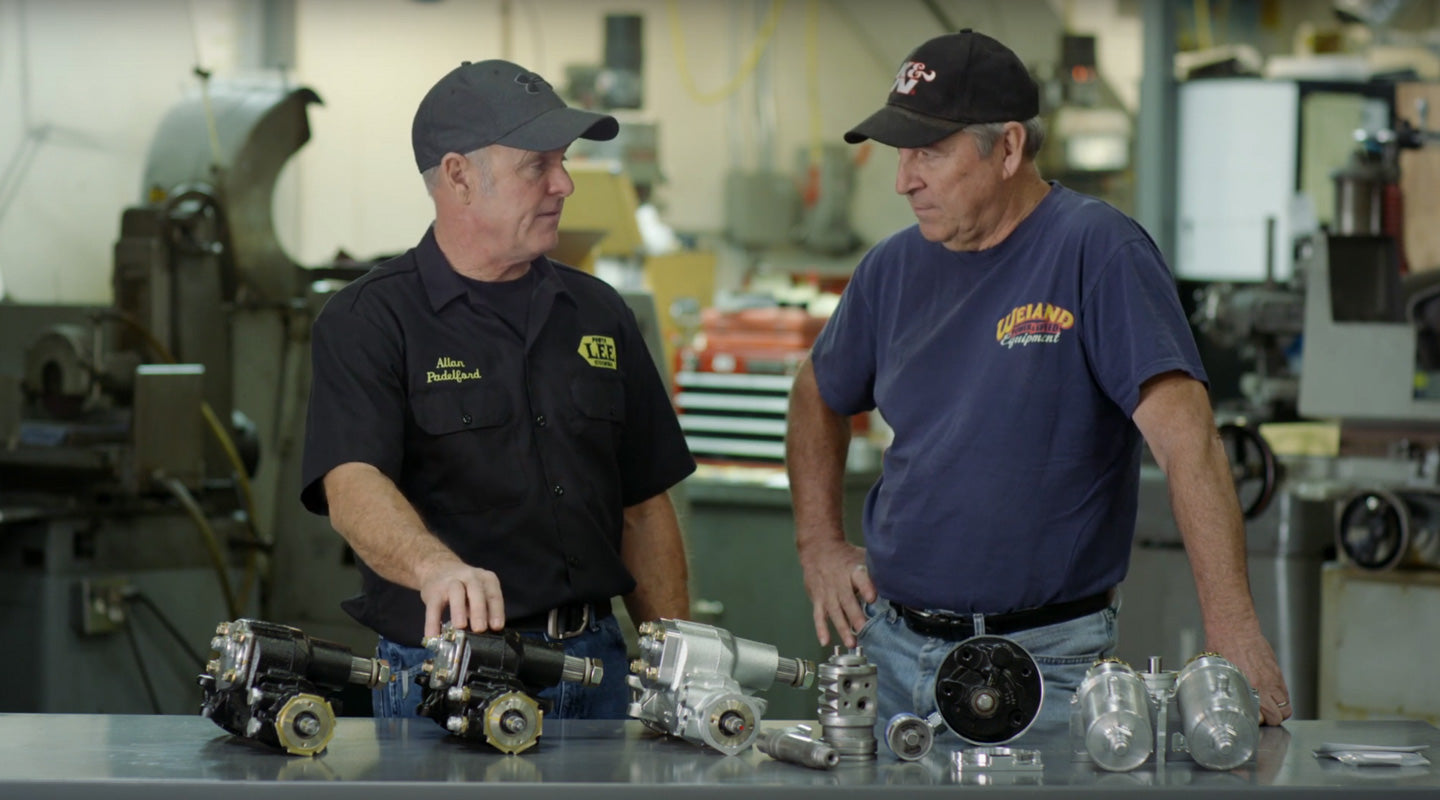Power Steering Gearbox Ratio Road Testing with Jeff Smith, Part 1

Watch Allan Padelford discuss power steering gear box ratios & steering efforts with Jeff Smith, former Editor of Hot Rod Magazine and current freelance writer.
Products Used In This Video
Video Transcript
Allan Padelford [AP]: Hello and welcome to Lee Power Steering in Valencia, California. I'm Allan Padelford, and today we're going to be discussing power steering gear box ratios and steering effort. In order to understand all this, we brought in our good friend, Jeff Smith, former Editor of Hot Rod Magazine and current freelance writer for all sorts of car-related magazines, and he's brought his '67 Chevelle. We're going to install these power steering boxes, different ratios and different valve weights or steering effort levels, into his car, and we're going to drive it.
Jeff Smith [JS]: How you doing?
AP: Hey Jeff. Good to see you.
JS: Glad to be here.
AP: Tell us a little bit about the car as it relates to the steering department.
JS: It's a '67 small block Chevelle with a TKO five speed, and right now it's got a little bit tuned up box, but it's basically a stock steering box. And it's got a real twitchy feel on the freeway, so it's not really ideal.
AP: Right. The steering effort level for your grandma.
JS: Right. Yeah exactly, one finger stuff. Not very good.
AP: That is probably the biggest part of a steering box tuning is the effort level. We've got three different boxes that we're going to try in your car. One of them is a 12.7 to 1, and the other one is a 16 to 1 variable, and we actually have our 9 to 1 race box.
JS: So when we talk ratios, there's actually a gear ratio in the box? Is that how that works?
AP: That's a really good question Jeff. That's a common misconception. There's a gear here, but it drives the sector shaft, and as the piston moves back and forth, it turns the sector shaft. But the actual ratio is coming from this reciprocating ball screw that's inside the piston. As you turn the wheel this moves the piston back and forth.
JS: And there's little balls that roll along the outside of that?
AP: Right.
JS: Okay. So that's the actual ratio.
AP: This is where the actual ratio comes from.
JS: So the pitch of that changes with the different ratio?
AP: Absolutely.
JS: Okay.
AP: And then when it gets to the feel, that's the power steering valve. This I the steering valve, and the torsion bar, the size of the torsion bar inside the steering valve, is what dictates the amount of feel.
JS: Okay, and the higher number is a slower ratio? So, 12 is fast and 16 is slow.
AP: That is correct which that's probably what your Chevelle originally came with, was 17 to 1, somewhere around there.
JS: Yeah, something really simple and fast.
AP: Right, and light.
JS: They are actually slow.
AP: So Jeff, we've talked about your desire to have a little quicker steering ratio and a better feel in the car. Do you plan on autocrossing the car?
JS: Yeah. It's mostly going to be street stuff, but a little bit of autocross too.
AP: All right. So our plan with that in mind is to use your stock style pump with a P pump, and get rid of the stock canister that tends to dribble out oil when you push it hard and overheats the oil.
JS: Yeah, I've seen that.
AP: We'll go to a reservoir and a can that can adapt to a reservoir. It actually separates the air out of the oil, keeps the oil cooler, and keeps the air out of the oil which in turn keeps the oil cooler.
JS: Outstanding.
AP: All right Jeff. Once we're out at the track, and you're going to tool your car around, we'll set up some cones and whatnot and drive it around and get some feedback from you about what the stock steering box feels like or whatever steering box is in there. And then we'll start switching them out for the 12 to 1, the 16 to 1, and then we'll try the 9 to 1's, probably a little bit more boxed in that you're going to want for that, but just to get a feel for it.
JS: But this would be the box if somebody was doing primarily autocross racing. This would be what they would want to choose.
AP: Yeah, that's a great box for that.
JS: With the tight radius corners.
AP: Right. So you'll have a Lee steering reservoir and a fresh pump. We're going to put all new lines in it, and probably go to AN lines so it just makes the changeover a little quicker.
JS: Right.
» More Blog Posts
